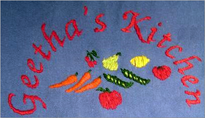Happy New Year Everyone! May your lives be blessed with good health, peace, love, joy and laughter everyday of the new year!
Here is a delicious Black-eyed peas dish to begin the New Year! Szechuan pepper (Fagara) is not really part of the pepper family but the berries from prickly ash trees. Japanese sansho is a close relative of fagara. Fagara is not hot like pepper but has a pungent flavor. It is used in Indian, Nepalese, Chinese, Japanese, and Korean cuisines. This stew can be made two ways - with or without garlic.
Fagara is available for purchase in Asian and Indian markets. If fagara is not readily available, it is no matter; just omit and proceed with the rest of the ingredients and you will still have a fabulous stew. Dessicated (dry, unsweetened) coconut may be used instead of fresh or frozen; use about half as much as the fresh.
4 Servings
Ingredients:Fagara is available for purchase in Asian and Indian markets. If fagara is not readily available, it is no matter; just omit and proceed with the rest of the ingredients and you will still have a fabulous stew. Dessicated (dry, unsweetened) coconut may be used instead of fresh or frozen; use about half as much as the fresh.
4 Servings
1 cup dry Black-eyed peas
1 tsp instant Tamarind paste
1/2 cup fresh grated coconut (or frozen)
2 dried Red Chile
1/2 tsp Cumin Seeds
3-5 Szechuan Peppers (Fagara), lightly toasted
Tadka/Thalippu:
1 tsp Oil
3 cloves fresh Garlic
OR
1/2 tsp Brown Mustard seeds
2 tsp skinless split Urad dal
1 pinch asafoetida
1 stem fresh Curry Leaves, minced
Method:
Sort, wash and cook the black-eyed peas until soft.
Remove any seeds from fagara before toasting.
Grind the coconut with chiles, fagara, and cumin until smooth adding a small amount of water using a blender.
Stir in the tamarind along with coconut paste into the cooked peas and bring to a boil; reduce heat and simmer for about 10 minutes.
NOTE: Now it is time to choose which way you want to proceed: garlic or not. If you are using garlic, then only garlic and curry leaves need be added. If you are not using garlic, then use the other ingredients in the thalippu.
NOTE: Now it is time to choose which way you want to proceed: garlic or not. If you are using garlic, then only garlic and curry leaves need be added. If you are not using garlic, then use the other ingredients in the thalippu.
Heat the oil and add either the garlic or the mustard seeds and urad dal. If using garlic, cook until golden. If using mustard seeds and dal, cook until dal in pinkish, then stir in the asafoetida. Lower heat, stir in the curry leaves carefully and cook for a few seconds.
Stir the thalippu into the peas and allow to rest for about 5 minutes.
Serve hot with rice or rotis and green veggies. Enjoy!!

















